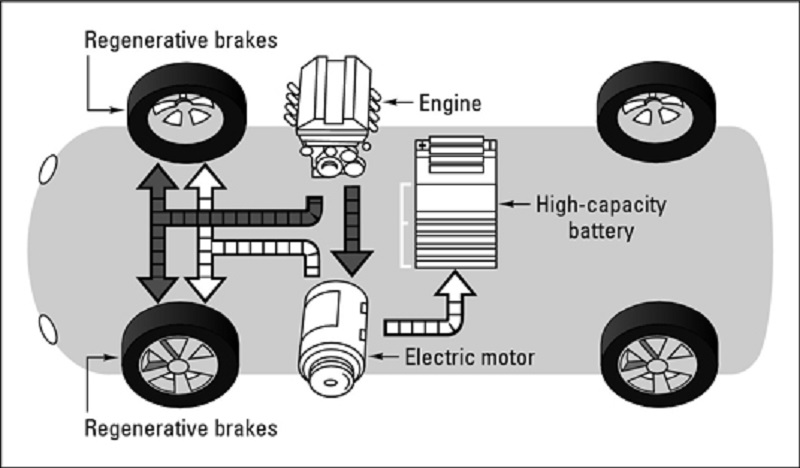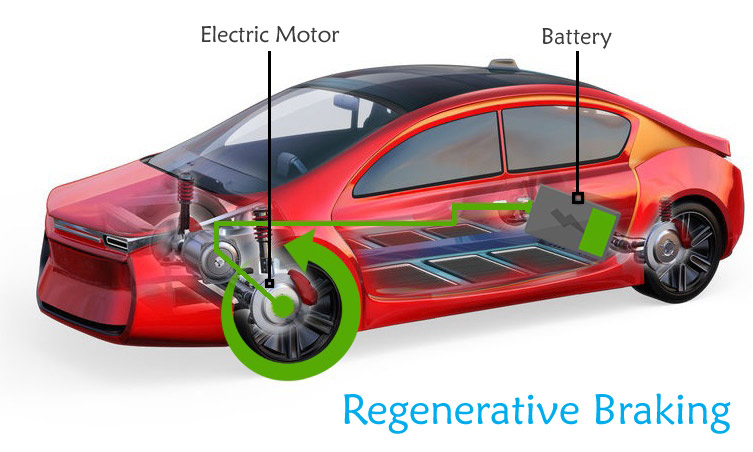Numerous traffic control systems are a characteristic of urban streets. Vehicles on the city roads experience a modest amount of deceleration and acceleration when starting from one location and then reaching the destination. Substantial energy loss occurs when a motor vehicle keeps accelerating and then slowing down or coming to a halt. The regenerative braking technology for cars can capture this energy and propel the vehicle, thus avoiding energy loss.
The regenerative system is getting more popular, as there are increasing numbers of hybrid electric vehicles or fully electric cars on the roads.
Contents
What Is Regenerative Braking?
This system is widely known as an energy harnessing method. The process slows down a moving car by altering its kinetic energy to another form of energy, preferably electrical power, to charge an in-built battery system. This stored charge can then propel the vehicle’s wheels and increase its energy efficiency.
When an electrical motor spins in to forward direction, it consumes power from the battery. However, when the same motor operates in reverse order, it charges the car’s battery. It is the principal science behind this braking mechanism.

When a car is moving on the road, it produces substantial kinetic energy due to velocity and mass. In this energy conservation process, an electric traction motor utilizes the same momentum as the vehicle to generate electrical power and charge a battery. Otherwise, the momentum will convert into heat energy in brake discs that will be useless.
Regenerative Braking vs Conventional Friction or Dynamic Brakes
After applying force on the brake pedal, the conventional braking system applies brake pad friction to brake discs, and the car wheels come to a stop gradually. The vehicle’s kinetic energy transforms to heat energy in the braking apparatus. It is ultimately a waste of gasoline energy due to friction braking.
A comparatively advanced idea is dynamic braking. An electric motor would capture the vehicle’s kinetic energy and produce electrical power but instantly consumed in resistors giving away a lot of heat.
However, the regenerative system is a revolutionary process where brake pedal activation leads to electric motors stopping the running wheels. Instead, they propel a traction motor in the opposite direction, which generates electricity and charges the onboard battery.
As the technology suggests, the regenerative system is highly successful for electric vehicles that run on a battery charge. This methodology improves car mileage by 16% to 70%. The efficiency range is wide because this method’s success depends on the driver’s braking style, vehicle heat, and surrounding temperature.
SEE MORE
Conclusion
Statistics from the automobile industry suggest that a standard-sized electric vehicle with one occupant running at 120 km/h produces kinetic energy of 0.25 kWh/km. If the car utilizes regenerative braking, this kinetic energy can increase vehicle range by 1.25 km each time it brakes. Therefore, the new-age EVs offer more energy efficiency than conventional ICEVs. Next time you decide to get an EV, be confident that you will save money and the environment at the same time.



